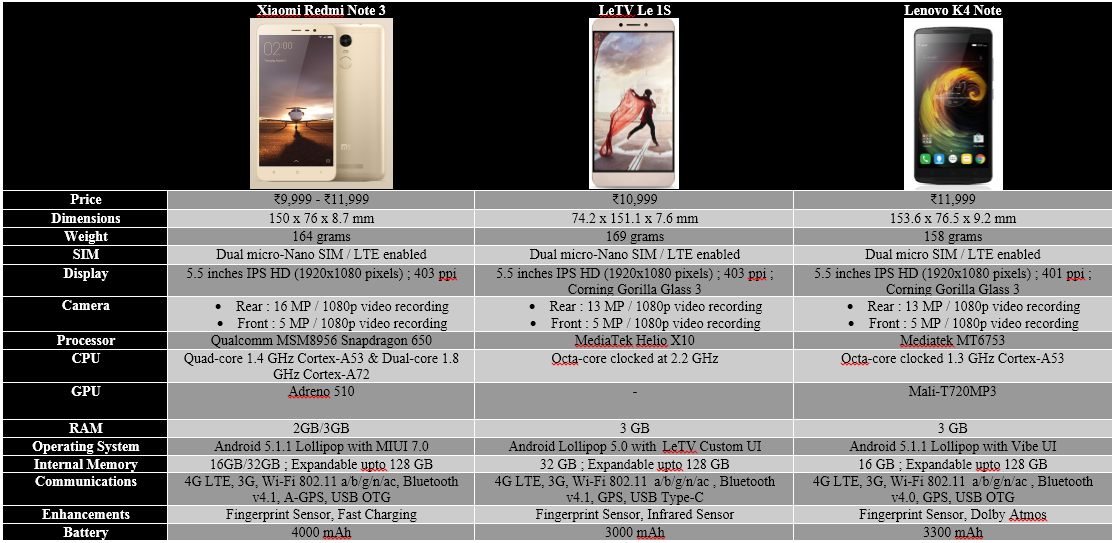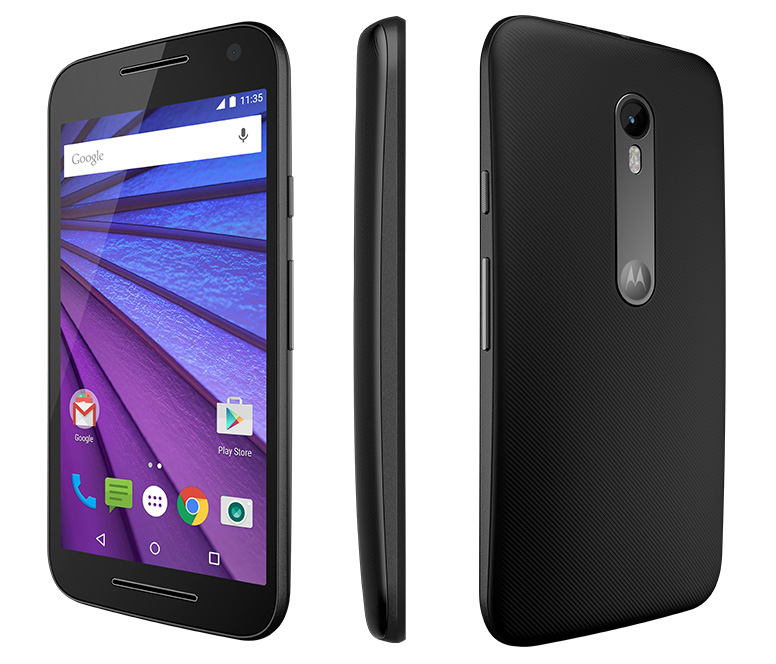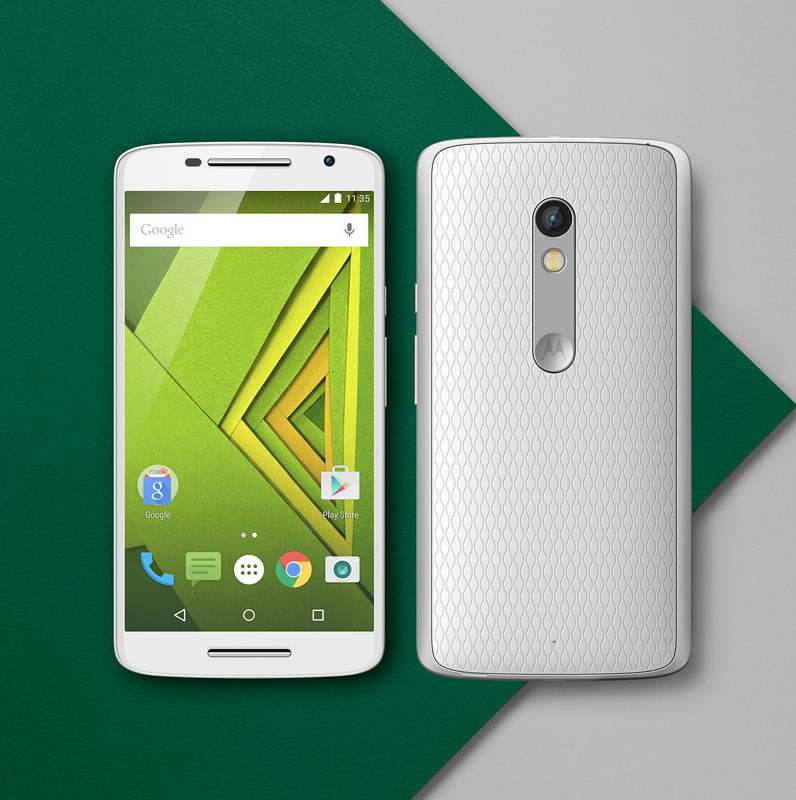The sub-12,000 smartphone segment is filled with new entrants, some worth your money others not so much. Xiaomi’s Redmi Note 3 goes on sale today and with this the battle between numbers and customer satisfaction has heated up in this budget segment. In the past two months, Lenovo and a new player that goes by the name of LeTV – which is a Chinese manufacturer, has been topping the charts in the country. Lenovo launched the successor to its K3 Note and LeTV entered India with its Le 1s smartphone. Both the devices are a hit among masses with Le 1s even managing to sell close to 200,000 units which is said to be a new record for a newly established company in the smartphone business.
Having said that, we are going to pit Xiaomi’s Redmi Note 3 with LeTv’s Le 1s and Lenovo K4 Note to give you a clear view as to which one of them you should go for.
Design & Display
Xiaomi’s Redmi Note 3 is a big overhaul in terms of design considering that the company has let go the use of plastic and has opted for aluminum unibodychassis for Redmi Note 3. LeTV’s Le 1s also has aluminium body. Both these devices feel premium in hand with chamfered edges and matte back. As for the Lenovo K4 Note, it still is plastic-built but gets curved edges.
Between Redmi Note 3, Le 1s and K4 Note – Le 1s is the thinnest of the lot with 7.6mm thickness followed by Redmi Note 3 with 8.7mm and the K4 Note being9.2 mm thick.
Now, all the three devices sport a 5.5-inch full HD (1920×1080 pixels) IPS display with a pixel density of 403ppi. While the K4 Note and Le 1s have an additional coating of Corning’s Gorilla Glass 3, Redmi Note 3 just does it with a scratch resistant layering which sort of is a letdown.
Hardware & Software
Redmi Note 3 is powered by hexa-core Qualcomm Snapdragon 650 coupled with Adreno 510 GPU. Le 1s and K4 Note on the other hand are usingocta-coreMediatek chipsets, Helio X10 and MT6753 with Mali-T720MP3 GPU respectively.
Redmi Note 3 is available in two RAM/memory variants, 2 GB/16GB and 3GB/32GB. LeTV’s Le 1s and K4 Note have 3GB RAM but Le 1s has 32 GB onboard memory while the latter does away with just 16 GB.
However, all the three devices have a provision of expanding the memory via micro-SD card.
Coming to the software part – the Redmi Note 3, Le 1s and K4 Note run on heavily customized Android Lollipop namely, MIUI 7.0, LeTV custom UI and Vibe UI respectively. The MIUI and LeTV’s interface is an impersonation of Apple’s iOS.
Camera
The Redmi Note 3 features a 16-megapixel rear and 5-megapixel front facing camera. Some enhancements include f/2.0 aperture, phase detection, HDR mode and dual-LED (dual-tone) flash.
On board the Le 1s and Lenovo K4 Note, is a 13-megapixel rear and 5-megapixel front facing f/2.0 aperture, PDAF camera with single-LED and dual-LED (dual-tone) flash respectively.
Battery
Xiaomi’s Redmi Note 3 draws its power from a non-removable 4000 mAh battery while Le 1s is fitted with a 3000 mAh batter and K4 Note has a non-removable 3300 mAh battery.
Enhancements
All the three smartphones feature fingerprint sensor which is a big advantage in this budget segment. Apart from this, with Lenovo K4 Note users can get a VR experience through ANTVR headset which uses TheaterMax technology. Also, the K4 Note has Dolby Atmos powered dual-front speakers which also makes it the first smartphone to have this feature.
Price
Xiaomi Redmi Note 3 is available in two memory variants: 2GB RAM/16GB and 3GB RAM/32GB priced at Rs.9,999 and Rs.11,999 respectively.
LeTV Le 1s is priced at Rs.10,999 while Lenovo K4 Note will set you back by Rs.11,999 with an additional Rs.1,300 for the ANTVR headset.
With near similar specifications on paper, Redmi Note 3, Le 1s and K4 Note are very different when it comes to actual usage. The user interface of the smartphones must be taken into consideration as well. Le 1s has the most heavily customized interface and the K4 Note has the least.
Here is the detailed specification sheet:





